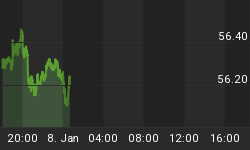Petroleos Mexicanos has been in an unrelenting downward spiral for decades. Pemex, Mexico’s state-owned oil company, has seen a vast and speedy decline of its production rates for the last 15 years, and at times it has vied for position as the most indebted oil company in the world, with “about $105 billion of bonds and loans outstanding,” according to the Wall Street Journal, a figure that has almost certainly grown since that figure was released last year.
Leftist Mexican President Andrés Manuel López Obrador, who won the 2018 presidential election in a landslide, used his planned improvements for Pemex as a central part of his platform. He promised to revive the ailing production numbers, crack down on the company’s rampant corruption scandals, and put an end to Mexico’s brazen and voluminous fuel theft. So far, many of those strategies have backfired.
President López Obrador’s flagship Pemex revival project has been the Dos Bocas refinery in his home state of Tabasco. The project was determined by experts to be dead in the water before developers had even broken ground on the refinery that the president promised would be the first step in the long road of recovery to making Mexican oil production great again. Now, the President’s pet project is getting even more negative attention amidst concerning and widespread reporting that the development has caused widespread and illegal environmental damage, including the destruction of protected mangroves.
As for cracking down on corruption, López Obrador did take serious steps to clean out some of the long-corrupt ranks of Pemex, but the backlash was severe as investors fled amidst the turmoil. The company reported a 36 billion-peso ($1.9 billion U.S. dollars) loss in the first quarter after López Obrador took the helm, and Moody’s Investors Service dropped the company to its lowest investment-grade rating last summer. “Instead of instilling more confidence in investors that Pemex is heading in the right direction, the sweeping corruption probes have, in fact, give many investors pause by adding to the perception that the company is both unstable and vulnerable,” Oilprice reported in July. “Investors are less interested in seeing [López Obrador’s administration] root out bad apples at Pemex than they are in his containing the spreading rot on its balance sheet,” Bloomberg Businessweek reported in the same week. “At more than $100 billion, its debt is the biggest of any oil company.” Related: Output In World's Largest Copper Mine Is Falling
Now, as crude prices drop and markets experience major volatility between the corona virus and the oil price war raging between Russia, Saudi Arabia, and the United States, Pemex has been hit hard--really hard. On Tuesday the company’s bonds hit a record low, and in the last quarter, their losses were a devastating $9 billion.
Despite this, officials from Pemex claim that there will be no direct harm to the Mexican government's budget. As reported by Reuters earlier this week, “Mexico's Finance Minister Arturo Herrera said on Tuesday a $1.37 billion hedge program completely covered 2020 national oil income following a steep drop in crude prices.” Speaking on Mexican TV network Televisa, Herrera told his interviewer that, “on the income side we're covered, there will not be a direct impact on the budget," Herrera said in a interview with TV station Televisa.
The Reuters report continues: “In January, the government said the finance ministry's hedge had a total cost of $1.37 billion. It has not disclosed how many barrels the hedge covers but said it had secured the price of $49 a barrel set in the 2020 budget. Mexico produces some 1.73 million barrels of crude a day.”
This rate of production is not enough to keep Pemex afloat, and, as such, the company has been bleeding money for years, making it reliant on government handouts. “The protection is largely provided by put options, a financial instrument,” Reuters specifies, “but most years also includes backing from a budget stabilization fund to guarantee government revenue.” It’s looking extremely unlikely that this year will be an exception.
By Haley Zaremba for Oilprice.com
More Top Reads From Safehaven.com:

















